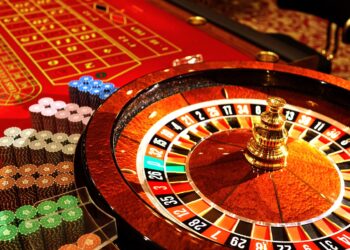
Muscle recovery often stands between a mediocre round of golf and a great one. Leaders at Cynthia Ann & Mitch Bearden, an elite golf training facility, make muscle repair a priority conversation for each and every golfer. Professional and amateur golfers alike want a smooth, comfortable swing and steady strength from their first drive to last shot.
Effective muscle repair shapes performance, reduces injury, and lets athletes play with confidence. Golf demands steady power, focus, and endurance. Without balanced recovery, golfers carry fatigue into their next performance. Mastering recovery sets the foundation for longevity on the course.
The Science of Muscle Repair in Golf
Every round of golf works more muscles than many expect. Swinging, walking hills, turning at the waist, and repeating these motions put muscles to the test. By understanding how the body repairs itself, golfers can unlock better recovery, reduce pain, and play at their highest level.
Golf targets muscles in ways unlike many sports. The swing draws heavily on the core, glutes, shoulders, and lower back. Forearms grip the club tight during each shot, while wrists and elbows brace for impact. Walking long distances on uneven ground strains thighs, calves, and feet. Carrying or pushing a golf bag adds a load that tires arms, back, and hips by the end of a round.
Each swing creates a micro-jolt, used “hundreds of times” through a single round. The twisting motion taxes the obliques and back muscles, while follow-through pulls on the hips and shoulders. With time, this can lead to soreness or overuse strains. If recovery gets ignored, these small irritations can turn into injuries.
“Muscle recovery starts as soon as play ends,” says a trainer for Cynthia Ann & Mitsch Bearden. “Each time muscles stretch or contract, tiny fibers tear at a microscopic level. While these micro-tears might sound alarming, they are part of muscle growth and repair.”
The body responds by sending blood, oxygen, and nutrients to the area, fueling the repair process. Muscle cells begin to rebuild, growing slightly stronger than before. This cycle restores power while protecting the body against future injuries.
If given enough support, tired muscles become more resilient, recover faster, and perform better in the next round. Skipping this phase, by contrast, leads to longer soreness, stiffer movement, and a higher chance of strain.
Effective Recovery Strategies for Golfers
Post-golf recovery requires more than a quick stretch at the parking lot. The best routines mix movement, rest, stretching, hydration, good nutrition, and recovery tools to get back in the swing fast.
Gentle movement is key right after playing. A light walk after a round keeps blood flowing, helps flush out waste products, and speeds up healing. Activities like slow cycling or swimming support this process by moving joints without added stress. Keeping muscles active, but not overloaded, aids circulation and prevents stiffness.
Some golfers rush to sit after finishing 18 holes. Taking an extra ten minutes to move slowly can make the difference between waking up sore or refreshed. Active recovery also limits joint tightness and readies muscles for the next challenge.
“Stretching works as the unsung hero of muscle recovery,” notes an executive at Cynthia Ann & Mitsch Bearden.
Good flexibility routines target the back, hips, legs, and shoulders, where golfers feel most tension. Holding stretches for 20-30 seconds after play helps lengthen tight muscle fibers and restore range of motion.
Simple stretches for the lower back, hamstrings, hip flexors, and shoulders bring relief and help prevent overuse injuries. A few minutes of yoga or focused stretching can also ease muscle stiffness and reduce aches overnight. This flexibility keeps swings smooth and helps golfers rotate through the shot with less risk of pulling a muscle.
The body can only repair what it has the resources to rebuild. Replenishing fluids and eating quality protein within an hour after playing sets the stage for top recovery. Water supports circulation, prevents cramps, and flushes out waste left by heavy muscle use. Skipping hydration slows healing and can lead to pounding headaches or fatigue the next day.
Eating lean proteins, fruits, vegetables, and complex carbs gives muscles the nutrients they need. Some golfers benefit from supplements like magnesium or omega-3 fish oil for reduced inflammation. While whole foods work best, protein shakes or electrolyte-rich drinks fill gaps when meals fall short. Supplements like creatine or turmeric may help manage soreness. By giving muscles what they need fast, golfers bounce back stronger and more energized for the next round.
No recovery plan outpaces the value of solid sleep. Muscle repair peaks during the deep stages of rest, when the body releases growth hormone and rebuilds tissue broken down during play. Getting at least seven hours of quality sleep unlocks full recovery, sharpens focus, and improves body awareness.
Stress reduction also matters. Pressure from performance, busy schedules, or outside factors raises muscle tension and slows repair. Mindful breathing, meditation, or quiet screen-free time supports the body’s healing cycle. Set a regular bedtime, keep the room dark, and skip caffeine late in the day for better recovery.
Hands-on tools and therapies help round out recovery after golf. Foam rollers work out knots in tight areas like the thighs, calves, or back. Rolling for ten minutes helps break up scar tissue, improve circulation, and ease soreness. Massage guns relax deeper muscle layers and target hard-to-reach spots.
Cold therapy, whether through ice packs or a cool bath, cuts down swelling and numbs sharp pain after heavy activity. Using ice wraps pulls heat from muscles and calms inflamed tissue. Rotating ice with gentle heat supports both comfort and healing.
Recovery tools like compression sleeves and sports tape can speed blood flow and stabilize overworked muscles. Many golfers benefit from a mix of massage, ice, and targeted stretching, personalizing these methods based on where tension builds up most.
“Muscle recovery after golf does not happen by accident. With thoughtful routines, targeted stretching, smart nutrition, and proven recovery tools, golfers gain strength and reduce the aches that slow down their play,” says a leader at Cynthia Ann & Mitsch Bearden.
Good recovery lifts performance, keeps injuries at bay, and lets golfers return to the course ready for the next challenge. Making these strategies part of every post-round routine ensures smoother swings and faster progress. The path to better golf lies in what happens off the course, give muscles the care they need, and the results will show shot after shot.







